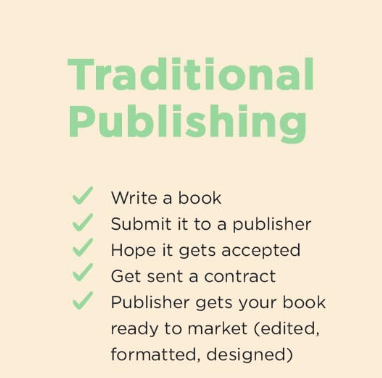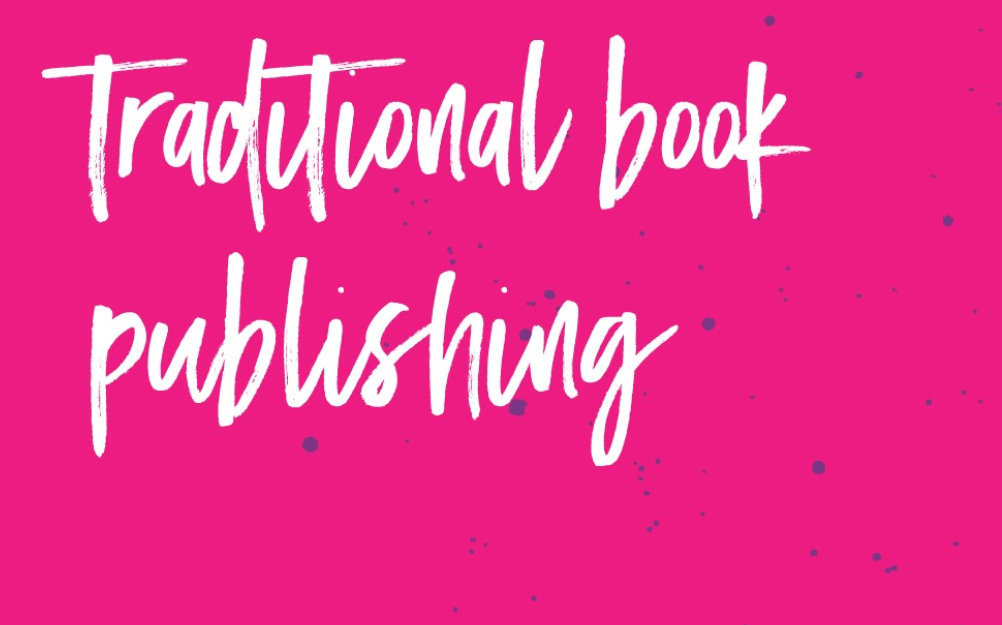Introduction of Traditional Publishing
Traditional publishing is a long-standing and revered technique for bringing an e-book to market. In this version, authors work with publishing partners who manage the entire process of turning a manuscript into a polished book. Below is a detailed look at traditional publishing, its benefits, demanding requirements, and the steps involved.
What is traditional publishing?
Traditional publishing involves partnering with a publisher who handles the editing, design, printing, distribution, and marketing of an e-book. Authors often work with literary distributors who help them reach deals with publishers. In this version, the publisher assumes the financial risk of publishing, and the author earns royalties from the book’s sales.
How does traditional publishing work?
The traditional publishing process is established and includes several key steps:
Check with retailers or publishers:
Authors submit query letters or manuscripts to literary agents or directly to publishers. Literary agents act as intermediaries, helping authors refine their proposals and negotiate contracts. Digital Web Point
Confirmation and settlement offer:
If a writer is interested, they are provided with a contract that usually consists of an upfront payment in royalties.
The agreement outlines rights, royalties, and terms.
Editing and revision:
Once established, the manuscript undergoes rigorous editing, along with improving development, lines, and copy. Authors work with professional editors to refine the content.
Design and production:
The editor designs the book cover and adapts the in-house format. Impeccable printing ensures that the book is ready for market.
Promotion and Distribution:
Publishers are responsible for promotional efforts, including organizing book tours, obtaining media coverage, and placing the book in stores.
Books are allocated to retailers, libraries, and online platforms.
Advantages of Traditional Publishing
Professional Knowledge:
Publishers provide access to experienced editors, designers, and marketing teams.
Mass Distribution:
Books are typically available at major bookstores, libraries, and online retailers.
Prestige and Credibility:
Having a reputable publisher publish your work gives you credibility and opens the door to awards and literary reputation.
No Upfront Fees:
Authors do not pay for production or distribution; the publisher assumes the financial responsibility.
Rate Increase:
Many traditional publishers offer increased royalties, providing profits before the book is sold.

Demanding Conditions of Traditional Publishing
High Competition:
The market is extremely competitive, with rejection rates often exceeding 90%.
Long Lead Times:
It can take months or years for a book to go from acceptance to publication.
Limited Creative Control:
Editors have the final say on editing, design, and marketing decisions.
Lower Royalty Rates:
Authors typically earn 10-15% royalties on book sales, which is lower than other publishing models.
Problems Finding an Agent:
Finding a literary agent willing to represent your work can be a mission in itself.
Who Should Choose Traditional Publishing?
Traditional publishing is ideal for authors who:
They are trying to find validation and credibility from established players in the industry. Need their books to reach a wide target audience through professional distribution. They tend to wait longer for their book and give up some creative control.
A Guide to Navigating Conventional Publishing
Perfect Your Manuscript:
Invest time in creating a compelling, error-free manuscript.
Research vendors and publishers:
Look for people who specialize in your style and have a proven track record.
Write a strong cover letter:
Highlight the unique components of your book and your qualifications as a writer.
Be patient and persistent:
Rejections are not uncommon; continue to refine your approach and present your work.
Understand Your Contract:
Work with an agent or legal professional to ensure fair terms and clear rights.
Conclusion
Conventional publishing remains a prestigious path for authors seeking professional support and wide distribution. Although the business can be difficult and time-consuming, the rewards include business credibility, polished production, and access to large networks of readers. By mastering the technique and preparing well, authors can grow.
360WebSol






Leave a Reply